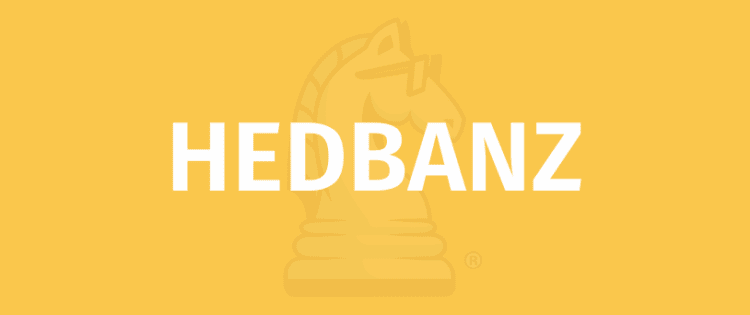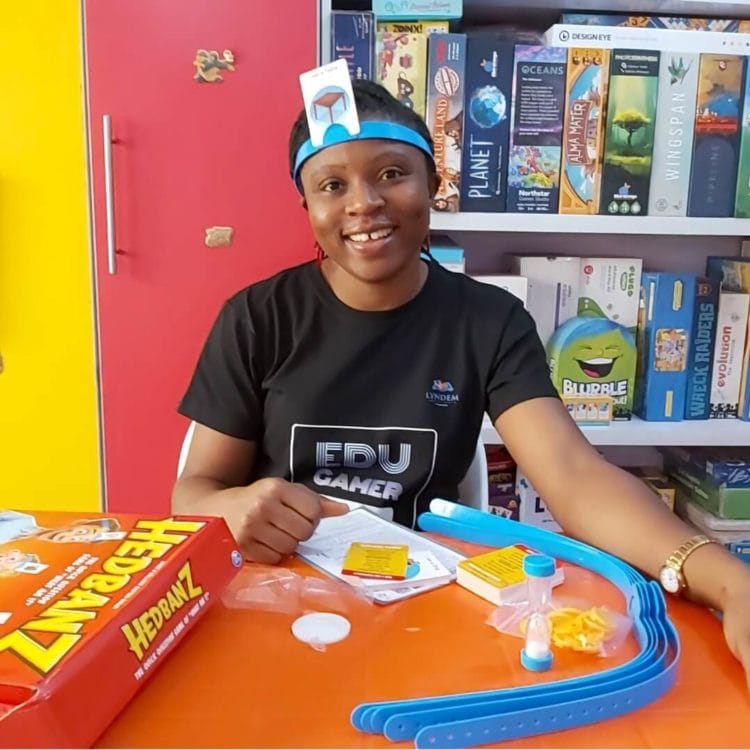
OBJECTIVE OF HEDBANZ: To be the first player to win three badges placed on your headband.
NUMBER OF PLAYERS: 2 to 6 Players
COMPONENTS: 6 headbands, 13 scoring badges, 69 picture cards, 3 sample question cards, 1 timer
TYPE OF GAME: Guessing Card Game
AUDIENCE: Ages 7 and Up
OVERVIEW OF HEDBANZ
Players try to guess what object is on the picture card attached to their headbands by asking random questions that can help them narrow down their guesses.
SETUP
Picture cards are separated from the sample question cards, shuffled, and then placed face down in the center of the play area.

Place the badges and sample question cards in the middle of the table within easy reach of players.
Players pick up a headband and wrap it around their heads in a snug fit, ensuring that the Hedbanz logo is stationed in between their eyebrows.
Every player is dealt a picture card face down which will be the card to start with.
Players pick up their cards without looking to see what the object is and insert it into the clip provided on the band with the picture side showing. Alternatively, the players take turns in helping the person next to them to fit in their picture cards, which is what I always recommend to avoid the cards getting frayed at the ends.
GAMEPLAY
The youngest player is given the privilege to start first.
On their turn, a player flips over the timer and begins to ask each of the other players “yes” or “no” questions to help them identify the object on their card. The sample question cards act as a guide.

For example, the player may ask “Am I food?” Or “Am I an animal?” or “Am I used in the home?”
If the player is lucky enough to guess their picture before the timer runs out, they get to put a badge on their headband and pick up another picture card and begin the questioning process again.
Let’s say a player is dealt a card with a squirrel picture. They may begin by asking, am I an animal? If they get a yes, as they should, it tells them that they are on the right track. The next likely question would be “Do I live on land?” or “Am I big or small?” or “Do I have fur?”
The player keeps asking questions that should help get them closer and closer to the picture they are bearing on their bands. Their minds are expected to collate all the information received from the other players so they can begin to tie the knots together and draw a logical conclusion of what animal that might be.

On no account should the other players deliberately mislead the person guessing.
If unfortunately, the player is not able to guess the object before the time runs out, the picture remains on their headband and play passes on to the next player on the left. At their next turn, the player continues asking questions about the unresolved card.
If after several attempts at guessing the object a player feels they are not close to guessing what the object is, players can decide to change the card on their next turn, and play continues.
SCORING
For every badge won and attached to the headband a player gets a point. For every badge won and attached to the headband a player gets a point. The aim is to be the first to get three badges. For every badge won and attached to the headband a player gets a point.
END OF GAME
Rounds are not predetermined. The game simply ends when a player acquires three badges which they attach to their headbands earning three points and thus winning.